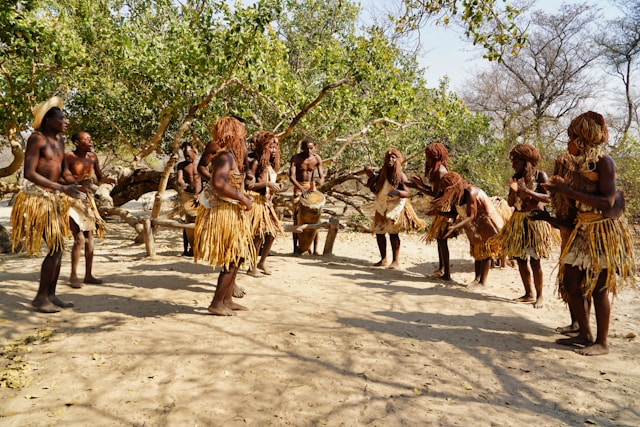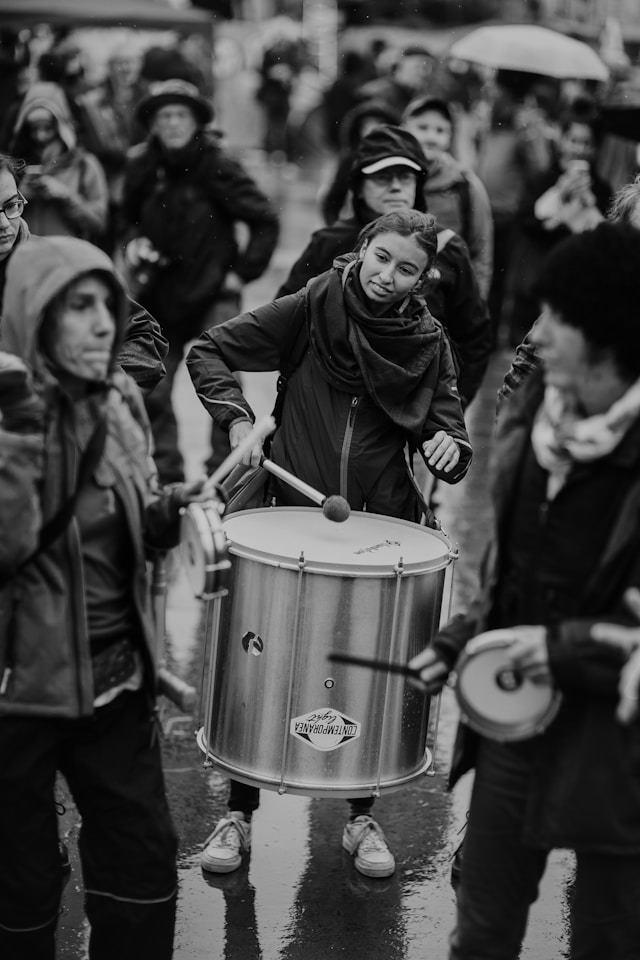Hello, sound enthusiasts! When we talk about music, our minds often draw images of the Western tradition: minor and major scales, symphony orchestras, and functional harmony. Yet beyond this familiar world lie endless soundscapes where music operates according to completely different rules—or sometimes with no rules at all.
Ethnomusicology is the discipline that helps us explore how people organize sound and offers a new understanding of the very nature of musicality. Let us immerse ourselves in a world where listening is as much a creative act as performing, and where the “musical” concepts familiar to us may be nothing more than cultural labels.
Scales: From Mathematics to Cognitive “Islands”
For centuries, starting with Pythagoras, it was believed that the intervals used in musical scales were mathematically determined, based on harmonic proportions. This theory usually relied on tuned instruments (such as strings).
However, in many cultures—especially where the oldest and most universal instrument is the voice—this rule does not apply. Studies of a cappella choral singing among the Bedzan Pygmies in Central Africa, who do not have explicit terms for scales in their language, revealed that their pentatonic tuning is extremely imprecise. Their intervals correspond to very broad categories that researchers compare to so-called “interval islands.” (D. Moelants, Exploring African Tone Scales (ISMIR 2009))
Interestingly, the study of African musical scales, particularly in Central Africa, requires new methods. Thanks to computational ethnomusicology, researchers can analyze and synthesize vocal and instrumental sound to uncover the implicit behavior of musicians and their culturally grounded cognitive categories for organizing scale systems.
Moreover, pitch organization in the music of sub-Saharan Africa does not rely on a fixed theoretical foundation. Ethnomusicological studies show a great variety of scales, often containing intervals that do not correspond to the European chromatic scale. African music often tends toward nearly equidistant pentatonic scales with intervals of about 240 cents. Although no standardized tuning systems exist, in more recent recordings from Central Africa we can observe a gradual evolution toward more regular, evenly tempered intervals, possibly indicating Western influence. (Simha Arom, African Polyphony and Polyrhythm: Musical Structure and Methodology.)

Harmony: Cultural Habit or Biological Need?
In Western musical culture, harmony is the key element that creates expectation, tension, and release. The association of major with happiness and minor with sadness is so deeply rooted that we tend to believe it is universal. Yet this distinction is likely a cultural convention dating back to the 14th century.
But is this preference universal? A study of the indigenous Amazonian group Tsimane’, who had almost no exposure to Western music, showed that they evaluated consonant and dissonant chords as equally pleasant. (McDermott J. H., et al., 2016, Indifference to dissonance in native Amazonians reveals cultural variation in music perception, Nature.) These findings suggest that the aesthetic perception of consonance is culturally determined.
At the same time, other studies comparing Western listeners (in the UK) with non-Western ones (the Kho and Kalash tribes in Pakistan) confirmed that the difference between major and minor modes carried no meaning for Pakistani participants, whereas British listeners responded to mode as expected. This once again confirms that the emotional coloring we attach to modes is a learned cultural convention.
Yet there are elements that appear to be universal. The Tsimane, despite their indifference to harmony, showed aversion to acoustic roughness—a sound quality that arises from the beating of frequency components when they are too close together. Roughness has a biological basis, as it is perceived at the level of the basilar membrane in the inner ear.
In the experiment with Pakistani tribes, it was found that roughness was a significant predictor of emotions. Higher roughness correlated with higher ratings of energy and dominance and, generally, lower ratings of valence (pleasantness). Thus, harmonic organization in music conveys both universal and culture-specific signals for emotional expression.

Rhythm, Polyphony, and the Body
When we move away from the staff notation system, we discover other levels of complexity. African music, for example, is characterized by complex and refined patterns of polyphony and polyrhythm. Simha Arom’s research in Central Africa revealed the underlying structures of this rich and intricate music, which at first may seem improvised.
Among the Venda and Nsenga peoples of Southern Africa, ethnomusicologist John Blacking argued that music is “humanly organized sound.” For the Venda, it is rhythm that distinguishes song (u imba) from speech (u amba).
The secret of their musical power often lies in the physical aspect: the Venda link rhythm to the overall movement of the body. For instance, in Venda drumming, each strike is part of a full bodily motion rather than just an isolated sound. Such an approach makes music an inseparable part of social life.
Music as Social Glue
Musical practices appear in every society. Yet what Western culture defines as “music” may not exist in the same form elsewhere. Many indigenous African groups do not have a term that equals the Western concept of music. Instead, they use words for specific actions such as singing, playing, or the broader act of performing, which also includes dance. The separation of sound from other arts reflects a Western abstraction.
Music holds a central place in building social bonds. Among the BaYaka Pygmies in the Central African Republic, people sing, dance, and tell stories every day. These practices sustain their cooperative and egalitarian values across generations.
Music works as a strong medium of communication. It may lack the precision of language, yet it often exceeds words in emotional, social, and spiritual force. The Venda people describe this view of life with the phrase: “A person is a person through their relationships with other people” (Muthu ndi muthu nga vhahwe). For them, music does not serve as an escape. It becomes an “adventure into reality,” where the individual mind grows within the collective.
Conclusion
The musical world beyond the West urges us to rethink what we call “musicality.” The Tsimane’s indifference to dissonance, the Bedzan Pygmies’ broad interval categories, and the African mastery of rhythm all reveal that culture shapes most musical preferences.
Researchers find that new methods help uncover these systems. When we avoid ethnocentrism and study music within its own context, we begin to see the vast range of ways humans organize sound. Relatedly, some studies also show why music can intoxicate as much as alcohol, which highlights its deep biological and emotional impact.
The evidence also shows that variation inside a cultural group often surpasses the differences between groups. This finding suggests that music is deeply individual as well as collective. Humanity’s musicality appears more diverse and complex than Western traditions alone might imply.






